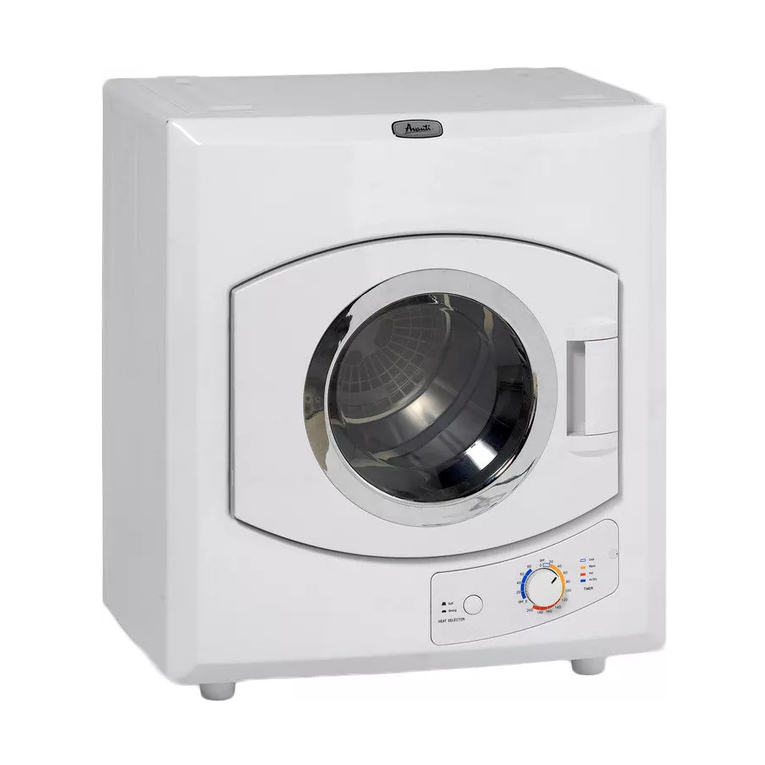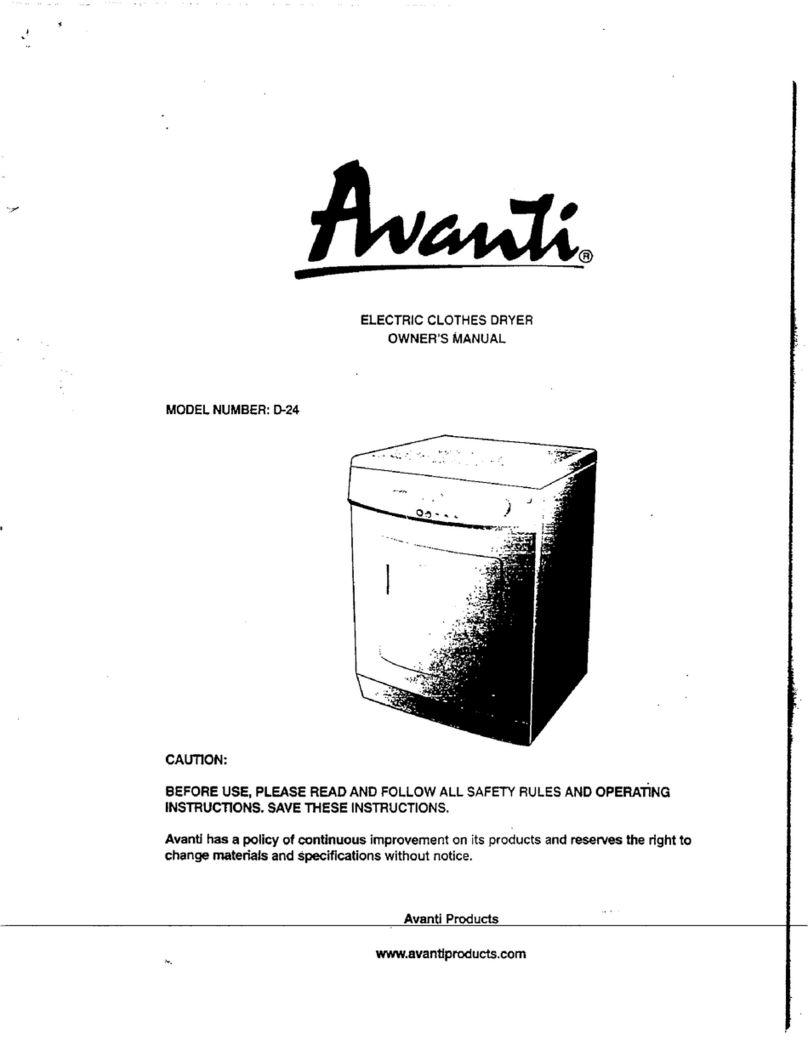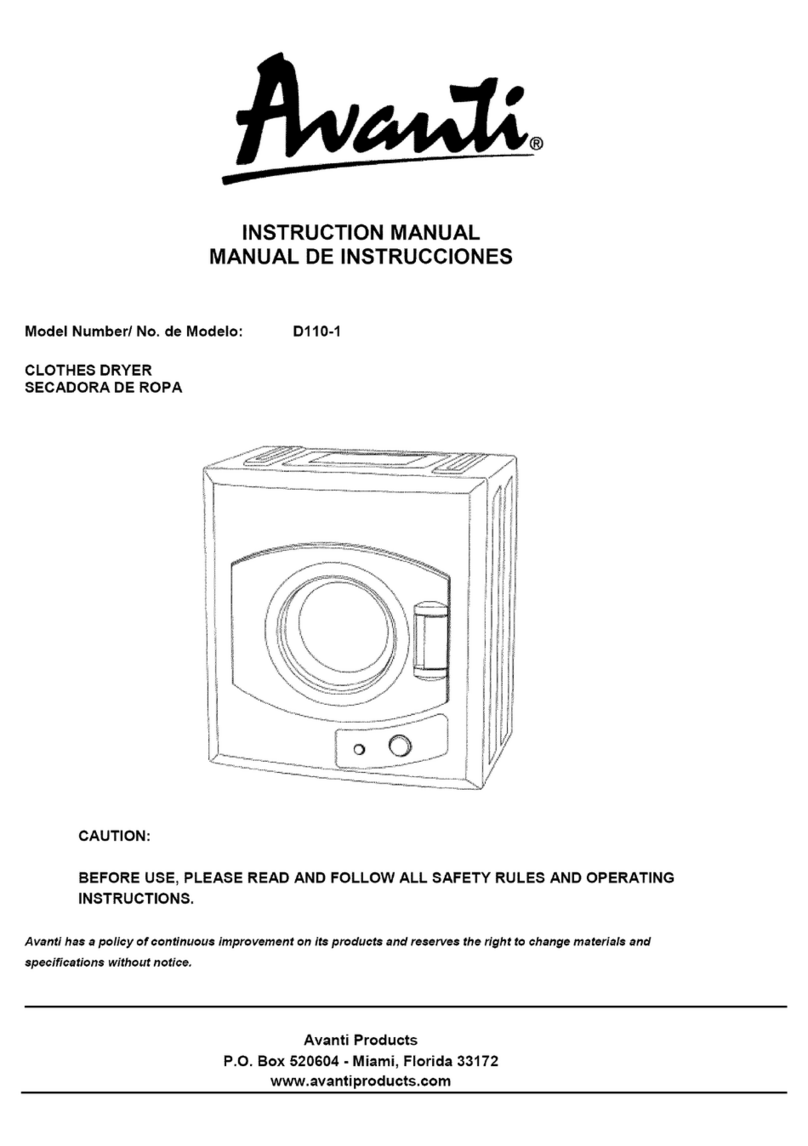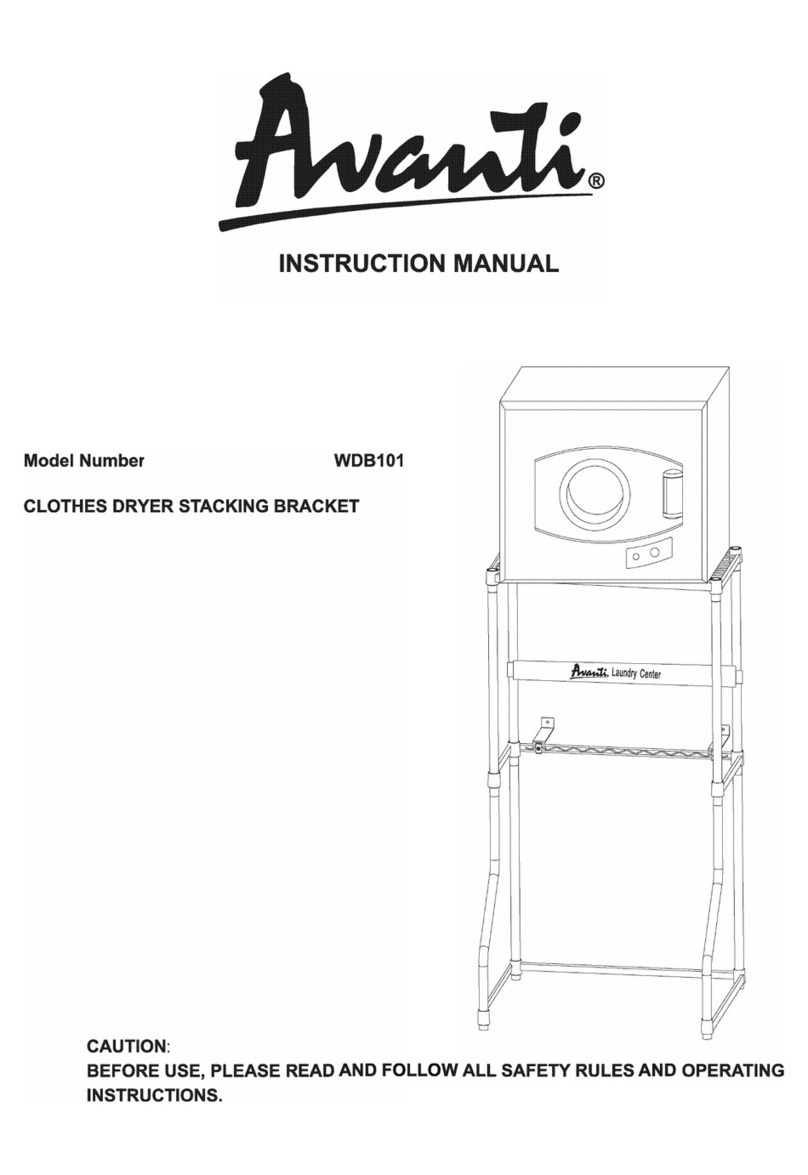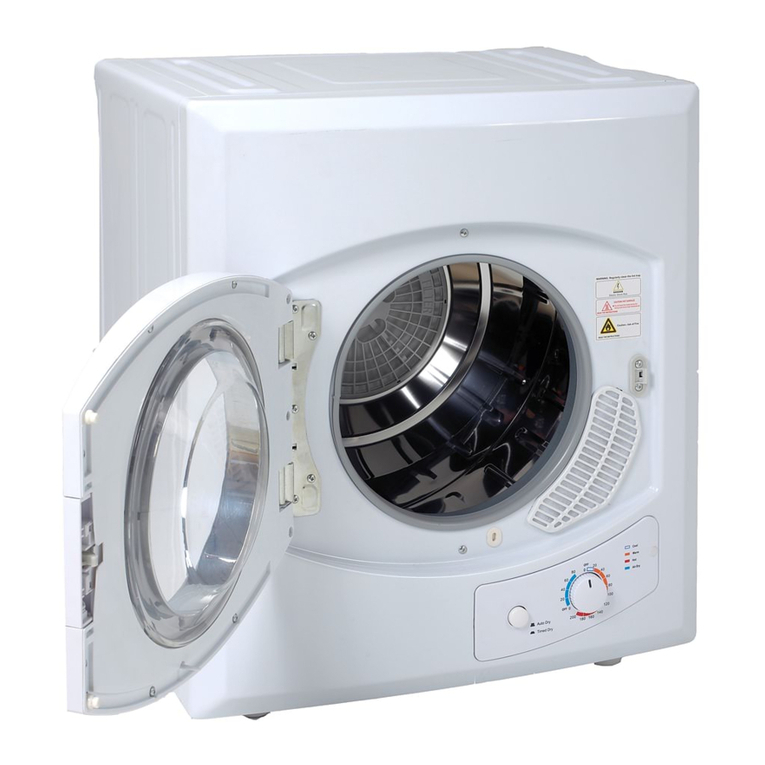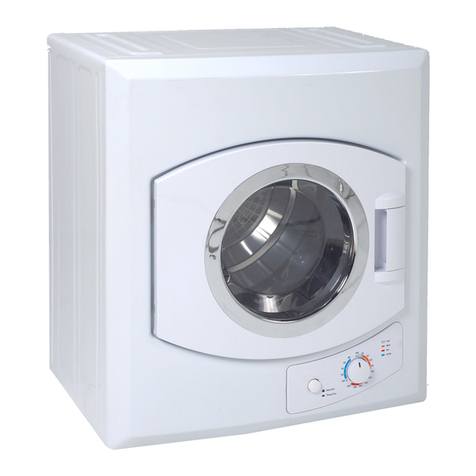
•Do not repair or replace any part of the appliance or attempt
any servicing unless it is specifically recommended in the user-
maintenance instructions or in published user-repair instructions that
you understand and have the skills to carry out.
•Keep the area underneath and around your appliances free of
combustible materials (lint, paper, rags, etc.), gasoline, chemicals and
other flammable vapors and liquids.
•Do not place items exposed to cooking oils in your dryer. Items
contaminated with cooking oils may contribute to a chemical
reaction that could cause a load to catch fire. To reduce the risk of
fire due to contaminated loads, the final part of a tumble dryer cycle
occurs without heat (cool down period). Avoid stopping a tumble
dryer before the end of the drying cycle unless all items are quickly
removed and spread out so that the heat is dissipated.
•Unplug the dryer if the machine is to be left for an extended period
of time, such as during vacations.
•Packaging material can be dangerous for children. There is a risk of
suffocation! Keep all packaging from children.
•Always check the inside of the dryer for foreign objects before
loading laundry. Keep the door closed when not in use.
•Do not use fabric softeners or products to eliminate static unless
recommended by the manufacturer of the fabric softener or product
manufacture.
•
Clean the lint screen before or after each load.
•Keep the area around the exhaust opening and surrounding areas
free from lint, dust, and dirt.
•The interior of the dryer and exhaust duct should be cleaned
periodically by qualified service personnel.
•Do not place items exposed to cooking oils in your dryer. Items
contaminated with cooking oils may contribute to a chemical
reaction that could cause a load to catch fire.
•This appliance must be grounded. See “Electric Requirements”and
“Grounding”in the “Operation Requirements”section.
•This appliance must be properly grounded. Never plug the power
cord into a receptacle that is not grounded adequately and in
accordance with local and national codes. Refer to installation
instructions for grounding this appliance.
•Ensure pockets are free from small irregularly shaped hard objects
and foreign material, i.e. coins, knives, pins, etc. These objects could
damage your dryer.
•Do not use heat to dry articles containing foam rubber or similarly
textured rubber like - materials.
Installation
Instructions






